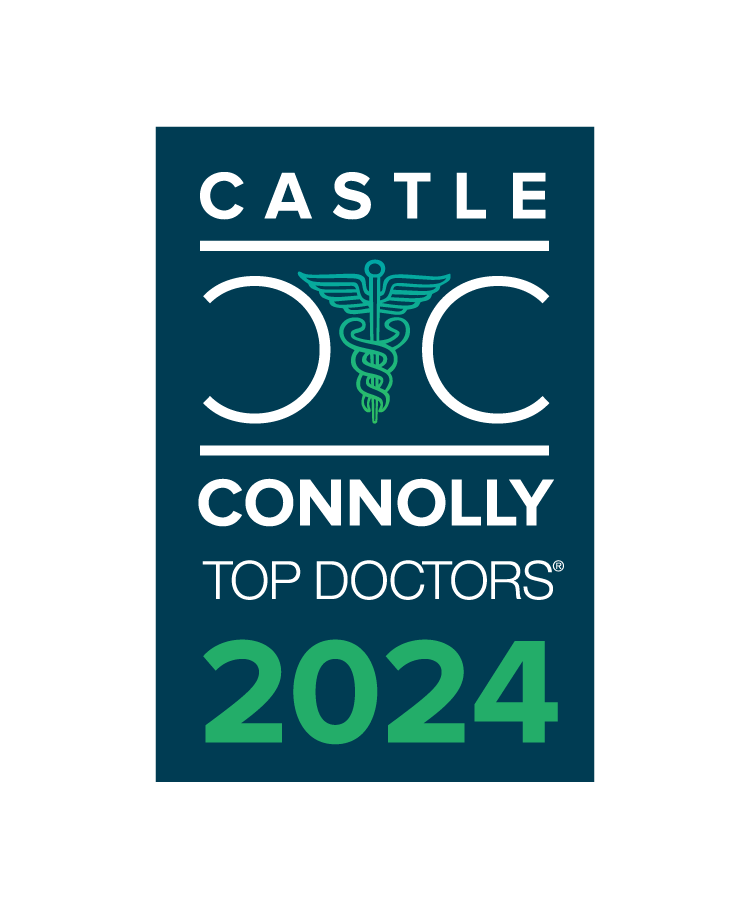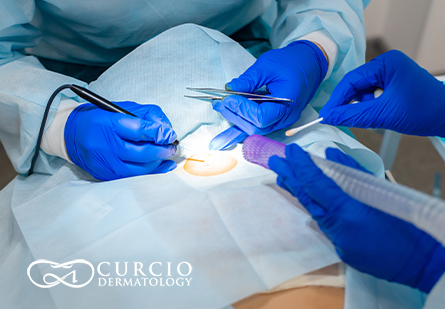Mohs surgery is a highly specialised procedure used to remove skin cancer while preserving healthy tissue. It’s often described as the “gold standard” of skin cancer surgery because it combines precision removal, microscopic margin control, and cosmetic reconstruction — all performed on the same day. Patients choose Mohs surgery for its high cure rate (up to 99%), its ability to leave the smallest possible scar, and its success in treating recurrent or complex cancers.
By removing and examining layers of skin one at a time, dermatologists can ensure that every cancerous cell is identified and removed. This step-by-step process minimises damage to surrounding tissue and speeds the healing phase. Once your Mohs surgery is complete, recovery becomes the most important part of your journey — how you care for your skin now determines your long-term results. In this guide, we’ll share expert, science-based tips to help you heal faster, reduce scarring, and protect your skin’s health after Mohs surgery.
Why It Matters Who Performs Your Mohs Surgery
Not all surgeons performing Mohs surgery have the same advanced training. Any board-certified dermatologist may offer it, but fellowship-trained Mohs surgeons complete an additional year of supervised, hands-on surgical training through the American College of Mohs Surgery. This extra education focuses on three core areas: tumor mapping, microscopic tissue analysis, and reconstructive techniques. The result is deeper expertise in both cancer removal and cosmetic repair.
Dr. Natalie Curcio is a board-certified, fellowship-trained dermatologic and Mohs surgeon. She has performed thousands of Mohs procedures, reconstructions, and follow-up scar revisions. Her fellowship in Mohs Surgical Dermatology ensures that patients receive comprehensive care — from diagnosis to post-operative restoration.
Additionally, Dr. Curcio’s second fellowship in Cosmetic & Laser Surgery gives her a unique advantage in reducing the visibility of scars and improving post-surgical texture. Choosing a fellowship-trained Mohs surgeon ensures your procedure is both medically precise and cosmetically mindful — two priorities that directly influence recovery success.
What to Expect Immediately After Mohs Surgery
After Mohs surgery, you can expect mild redness, swelling, or tenderness around the treated area. These are normal healing responses. The wound may be stitched closed, left open to heal naturally, or reconstructed using a skin flap or graft if necessary.
The first 48 hours are crucial: keep the site elevated if possible, avoid strenuous movement, and follow your dermatologist’s wound-care instructions carefully. It’s common to notice some tightness as the skin begins contracting to close the wound – this is a normal stage of the healing process.
Pro Tip: Apply a cold compress for 10 minutes several times a day during the first two days after Mohs surgery to limit swelling. Avoid placing ice directly on the wound.
Because Mohs surgery targets precise tissue layers, the healing process tends to be smoother than after traditional excisions. Still, every patient’s timeline varies depending on age, immune health, and wound size.
Essential Tips for Faster Healing
After your appointment, your dermatologist will give you an individualised aftercare plan. Follow it exactly — skipping steps can slow recovery. Cleanse the wound gently with mild soap and water, pat dry, and apply petroleum jelly or your prescribed ointment to keep the site moist.
Keeping a wound slightly moist encourages epithelial cell migration, a process that helps new skin form more efficiently. However, too much moisture may cause skin maceration, so balance is key. Cover the wound with a sterile bandage, change it as directed, and avoid touching the area with unwashed hands.
If your Mohs surgery was performed on the face, nose, or ear, be especially careful to protect it from bumping or friction — even mild trauma can reopen delicate skin. Patients who exercise regularly should avoid high-impact activity for the first 1–2 weeks.
Typical Mohs Surgery Recovery Timeline
| Time After Surgery | What to Expect | Recommended Care |
|---|---|---|
| Days 1–3 | Redness, swelling, slight bleeding | Keep site clean, apply ointment, use cool compress |
| Week 1 | Scabbing and early tissue repair | Continue gentle cleaning, avoid picking or rubbing |
| Weeks 2–4 | New skin formation | Apply SPF 30+, avoid swimming, protect from sun |
| Months 1–6 | Scar maturation and fading | Use silicone gel or sheets, begin gentle massage |
| Up to 12 Months | Texture and colour normalise | Consider laser resurfacing or cosmetic follow-up |
How to Minimise Scarring After Mohs Surgery
Minimising scarring is a common goal after Mohs surgery, especially on highly visible areas such as the face or neck. The most effective strategy for scar prevention is sun protection. Ultraviolet radiation can darken scars and slow collagen remodelling, so always use a broad-spectrum sunscreen (SPF 30 or higher) once your wound has closed.
Avoid swimming pools, saunas, or steam rooms until cleared by your dermatologist — excessive moisture can soften the healing site and increase infection risk. When approved, silicone gels or sheets can flatten and smooth scars by hydrating the tissue and reducing tension.
Gently massaging the healed area in small circles for 5–10 minutes daily promotes collagen alignment and flexibility. Patients recovering from Mohs surgery can also discuss advanced treatments such as laser therapy or microneedling with their dermatologist to further refine appearance once full healing occurs.
Remember: Complete scar maturation may take up to a year, but most patients notice significant improvement within the first 3–6 months.
When to Call Your Dermatologist
It’s important to monitor the surgical site closely after Mohs surgery. Contact your dermatologist immediately if you experience any of the following:
- Increasing redness or warmth around the wound
- Pus or foul-smelling drainage
- Persistent bleeding or wound separation
- Fever, chills, or general malaise
Early intervention prevents infection and helps preserve cosmetic outcomes. Even if you heal well, schedule regular check-ups to monitor for new or recurring skin cancers. Many patients return for annual skin examinations to ensure long-term skin health.
Healing after Mohs surgery takes time and patience. By combining excellent surgical technique with careful at-home care, you can expect strong, lasting, and cosmetically satisfying results.
Long-Term Care After Mohs Surgery
Your dermatologist will likely schedule follow-up visits in the weeks and months after Mohs surgery to evaluate scar development and detect any residual cancer cells. Consistent aftercare is vital for maintaining results.
Long-term steps may include:
- Daily use of sunscreen on the surgical site
- Application of silicone gel or vitamin E oil after full closure
- Avoiding tanning beds and unprotected outdoor exposure
- Maintaining hydration and balanced nutrition for skin health
- Yearly professional skin checks
Some patients who undergo Mohs surgery benefit from minor cosmetic refinements later, such as laser dermatology or resurfacing treatments, to even out colour and texture differences.
About Dr. Natalie Curcio
Dr. Curcio is a board-certified, fellowship-trained dermatologic and Mohs surgeon based in Nashville, TN. A member of the American College of Mohs Surgery and the American Society for Dermatologic Surgery, she combines oncologic precision with cosmetic artistry. Dr. Curcio has performed thousands of Mohs surgeries and reconstructions, offering patients advanced care and long-term guidance through every phase of recovery.
When You’re Ready to Heal Confidently
Your dermatologist will be your best partner throughout the Mohs surgery recovery journey. For personal aftercare guidance or to discuss laser and scar-management options, contact our office or schedule a follow-up appointment with our team.







